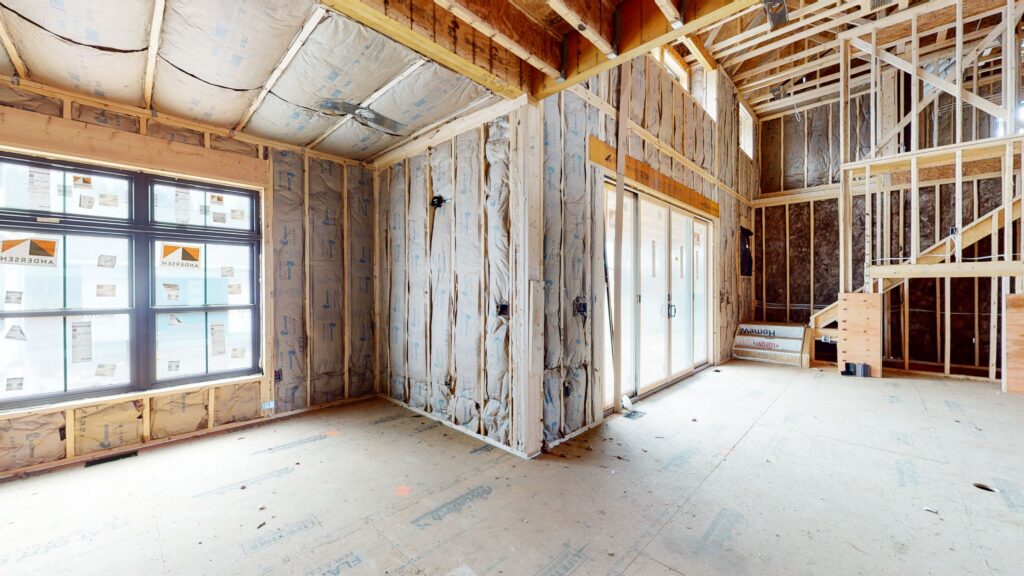(without Compromising Quality)
Construction costs are at an all-time high, but it’s still possible to build your dream home within your budget. The key is understanding the cost-driving factors and how you can avoid unnecessary expenditures. We’re here to explain what you can do to keep your costs under control without sacrificing quality, including some Do’s and Don’ts to achieve this goal.

Don’t : Choose the cheapest materials.
Cheaper materials tend to be lesser quality. You don’t necessarily need to use the most premium, top-of-the-line products and materials to build your home, but utilizing ‘builder-grade’ materials can often lead to problems. Cheap materials can cause installation issues meaning more time & more money. There are also long-term effects such as replacement costs and higher energy usage. If you try to save money on your exterior envelope (siding, sheathing, windows, doors, insulation) you will see an immediate and consistent surplus in utility costs throughout the lifespan of your home.
Do : Prioritize where your money is spent.
Determine what is important to you and let those priorities inform your decisions. We outlined the importance of ensuring a good thermal envelope. While it’s difficult and expensive to replace insulation and windows, it’s relatively inexpensive to replace flooring, cabinets, and countertops over time. If countertops are very important to you, maybe you can save money on the flooring or cabinets. You can also reduce the number of custom built-ins (bookcases, mud benches, and other casework). Those items are costly and can be easily added in the future. Fireplaces and other features can often be added later, though it’s smart to have the original construction prepped (plumbing, electrical, etc) for these possible additions.
Don’t : Buy all your fixtures online or at the ‘big box’ store.
While buying certain items this way can save you money, those items are often lesser quality and can even fail to meet code. Check with your builder or architect before making these purchases. They may give you the thumbs-up, but they can also let you know if there are any concerns or issues you should be aware of. For example, a faucet bought at a ‘big-box’ store will often come with cheap fittings and materials. A similar fixture purchased by the contractor from a commercial plumbing warehouse would have quality fittings and materials that will last longer and perform better.
Do: Talk to your architect or contractor about material alternatives.
Your home might be designed with high-quality, premium products, but there are often alternatives that perform well but save cost. Windows, for example, come in many varieties from many different brands. Another example is flooring. If you are not locked into one specific type/brand, your contractor can likely guide you to their supplier who would have high-quality materials at very competitive prices do to their stock and availability. Your architect and builder have the experience and knowledge to guide you through the process. Listen to their advice and let them help you make informed decisions, solve problems, and achieve a successful outcome.
Don’t : Assume every square foot of your house costs the same.
The cost of building a home is often discussed in ‘cost-per-square-foot’ terms. While this is terminology is useful for initial conversations, it can be misleading. Let’s say the anticipated cost of a 2,000 SF home, after bidding and pricing, is estimated to be $500,000. That equates to $250 per SF. You can’t simply reduce the room sizes by a few feet here and there and expect to save $250 for every square foot you’ve reduced. The overall cost has many factors ‘baked in.’ Eliminating scope items (such as plumbing and casework) and reducing the cost of fixtures and finishes (such as flooring, countertops, cabinetry, etc) will have a much larger impact than squeezing down room sizes.
Do: Consider a smaller scope of work:
Be realistic about your budget and prioritize your must-haves. Keep your project small and remove complexity to stay within your means. Allow at least a 20% contingency for unforeseen expenses during construction.
Don’t: Attempt to be your own General Contractor:
Construction professionals have years of experience, established relationships, and know-how to coordinate and execute projects efficiently. The coordination of scheduling and running a construction process is a tedious and time-consuming endeavor. Not having subcontractors properly aligned / scheduled can cause significant delays and extra costs resulting from re-work. Furthermore, general contractors have established relationships with subcontractors and suppliers. These working relationships yield better costs, lower lead times, and increased trust. Trying to manage it yourself can lead to costly mistakes and inefficiencies. The money you save by not paying a General Contractor can be far outweighed by the additional costs, timelines, and headaches resulting from a DIY approach.
Do: Trust your professionals:
Your architect and builder have the experience and knowledge to guide you through the process. Listen to their advice and let them help you make informed decisions, solve problems, and achieve a successful outcome.
Building your dream home can be a daunting task, but by being realistic, sticking to your original plans, and trusting your team of professionals, you can keep costs under control and achieve the results you desire. By avoiding common misconceptions and focusing on the right strategies, you can make your dream home a reality without breaking the bank.
We would love to help you make yourself a home. Come design and build with us!

